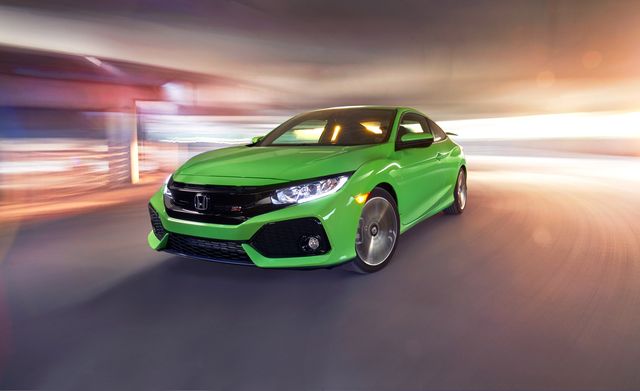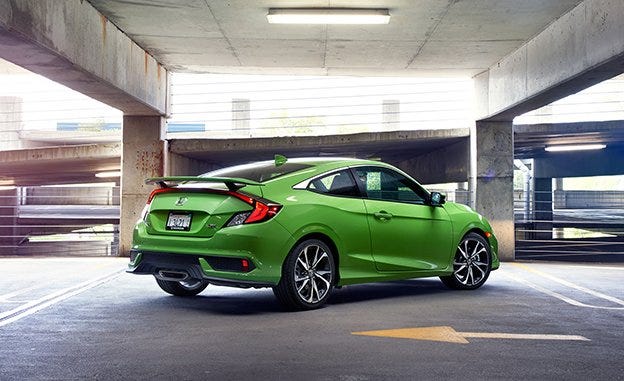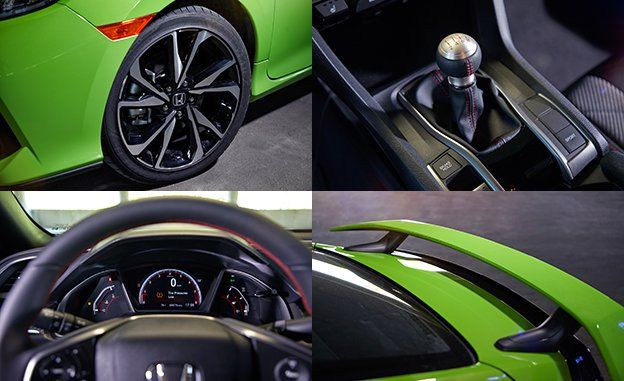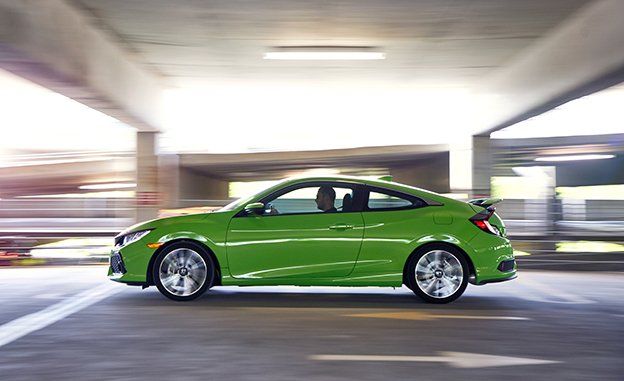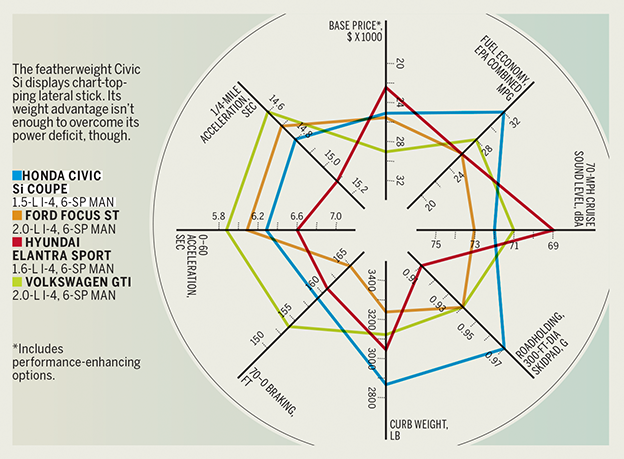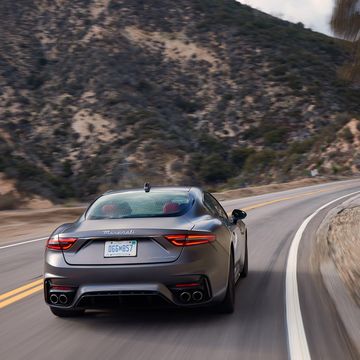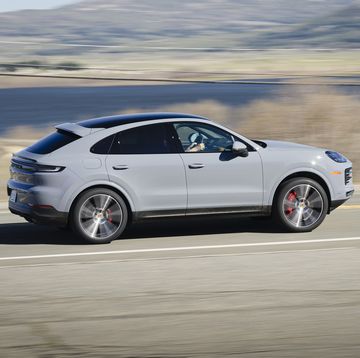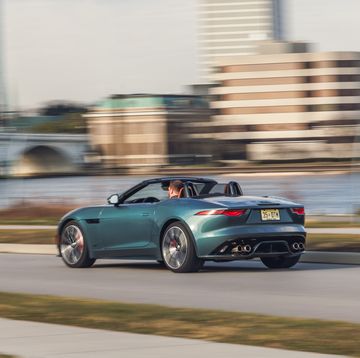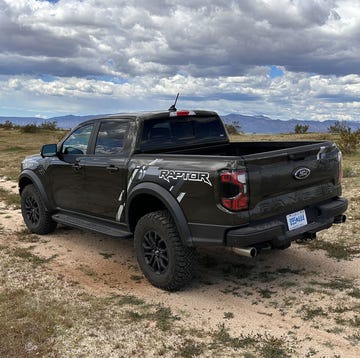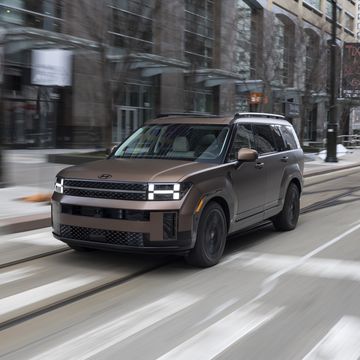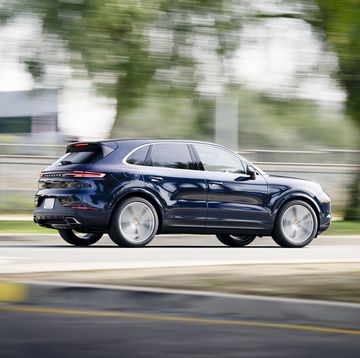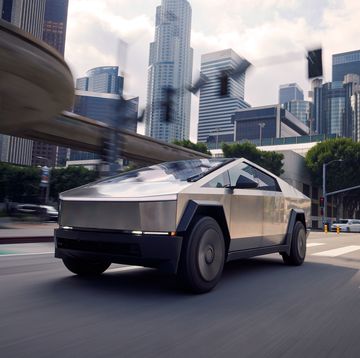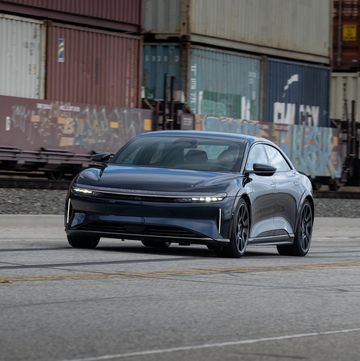From the August 2017 issue of Car and Driver.
Revolutions per minute are suffering a low birth rate. Granted, they’re still something that we generally encounter by the thousands, but their populations are slipping. The Civic Si is the latest to have its revs edged out by the auto industry’s most invasive of species, the turbocharged psi. The naturally aspirated 2.4-liter inline-four in this car’s predecessor wound to 7400 rpm, but the turbocharged 1.5-liter unit in the gen-10 model waves the white flag at 6600. For decades, the Civic Si has been defined by its engine, by the joy of the car rooted in the challenge and satisfaction of shuffling screaming rpm with a nice, tight manual transmission. Now, not long after the spot in the old Si where the high-rpm cam lobes would engage and your spine started to tingle, this new Si gives you three quick flashes of the shift lights and smacks you in the face with the fuel cutoff. So long and farewell, VTEC-shrieking Civic Si. But how’s this new reality?
Damn good. The Si has always been an adept handler, and this generation, available as a coupe or a sedan, is the best ever.
The body shell is shared with the regular Civic, with no stiffening or reinforcing to be found, but such measures aren’t necessary. The suspension does get a thorough rework for Si duty, however. Honda stiffened the springs and anti-roll bars, both bits by 7 percent in the front. The rear springs are 32 percent firmer, and the anti-roll bar has 26 percent more starch. Solid-rubber bushings replace the base Civic’s fluid-filled pieces, and adaptive dampers bolt to more rigid mounts. The stiffened upper links in the multilink rear suspension are shared with the upcoming Civic Type R. The variable-ratio steering rack carries over, but gets a more powerful motor and unique tuning. We pulled 0.97 g on the skidpad with the eyeball burner on these pages (Honda calls the color Energy Green), tying the likes of the BMW M3 and the Jaguar F-type.
With enough tire and roll stiffness, though, you can make a shopping cart or the Oscar Mayer Weinermobile pull 0.97 g. The Si’s trick is its remarkable compliance. This Honda is one of the best-riding cars to generate a skidpad figure like that. There’s no harshness to anything but the most wicked of impacts. The wheel and body control are impeccable, and if you want, you can nearly pretend that the Si’s primary objective is fast-paced civility.
We say “nearly” because the car is still fierce. The steering is extremely quick, with a 10.9:1 ratio at the ends of its travel, and also wonderfully weighty and communicative. And the brake pedal takes a predictable balance of travel and pressure to modulate. With rotors that are upsized 1.2 inches in front and 0.9 inch in back, the Si stops from 70 mph in 159 feet, dead even with the rest of its class. Our Si also produced an ungodly squealing, arriving at our office straight from a track event where it had been fitted with aftermarket brake pads. While the braking distance is unlikely to change on the stock pads, the original equipment would be less likely to generate its best stopping numbers on tries five and six.
The Si twitches into turns instantly with nigh-imperceptible roll, hunkering and sticking while the standard helical-gear limited-slip lets it grunt out of even the tightest bends under aggressive throttle. If the joy of the former Si was in keeping the engine on point with the chassis in a supporting role, this one flips that equation, the powertrain demanding less attention while it shuttles the leading-man chassis into and through each corner in pursuit of the next.
Push the sport button on the center console and the dampers firm up, the steering becomes so gloriously heavy that you might wish for a third arm, and the throttle response gets more immediate. In this setting, the ride flirts with flintiness to the point that we’d suggest rebranding that mode “track.” Anywhere else, the baseline setting is a better compromise, pulled as tight as a tug-of-war rope.
It’s been a long time since an Si used the same engine as the regular Civic. Well, most of it, anyway. Honda has reshaped the Si’s pistons for better cooling and a slightly lower compression ratio, 10.3:1, down from 10.6 in the regular Civic. A larger, high-flow turbo steps up boost to 20.3 psi, an increase of 3.8. These changes net 205 horsepower and 192 pound-feet of torque, 31 more horsepower and 25 more pound-feet than the 1.5 can muster in a non-Si coupe or sedan. But those increases slip to 25 and 15, respectively, compared with the hatchback-only Civic Sport. Against the outgoing Civic Si, it’s a gain of zero horsepower. Still, the 5700-rpm power peak arrives 1300-rpm earlier than in the old Si, and the torque crests 2300 rpm sooner, at 2100.
While output lags considerably behind its competitors—the Ford Focus ST enjoys an additional 47 horsepower and 78 pound-feet—the Civic’s comparatively svelte 2879 pounds allow it to keep pace in a straight line. Its zero-to-60 time of 6.3 seconds is just 0.2 second behind the best run we’ve coaxed from an ST, and the Si narrows that gap to a single tenth through the quarter-mile, at 14.8 seconds. Volkswagen’s GTI is right on top of the Ford and Honda, while the launch advantage of its all-wheel-drive system puts the Subaru WRX way out ahead.
Its minute displacement means that Honda’s turbocharged motor has one thing in common with the screamers that forged the Si’s reputation: a dearth of torque at low rpm. Give it a couple of seconds to build boost and it’ll recover, but you do not want to skip gears in the 2017 Si any more than you would in an older one. And even once the pinwheel wakes up, this generation’s trade of the old high-rpm rip for anonymous turbo-four moan isn’t one we’d have voted for. Know what else has a boosted 1.5-liter? The Chevrolet Malibu. The two don’t sound as different as you might wish.
On the other hand, the EPA must be quite pleased with Honda’s new engine. The last Civic Si managed all of 31 mpg on the highway cycle, with in-town consumption of just 22 mpg and a combined figure of 25. This new one picks up 6 mpg in the city cycle and 7 on the highway, for totals of 28 and 38, with a combined rating of 32. Maintaining 75 mph on a 200-mile highway loop, we saw 36, though, as with its predecessor, premium is recommended for the 2017 car. In 450 miles of mixed driving, we averaged 26 mpg.
But if the engine no longer feels special, the transmission picks up some of the slack. A six-speed manual is the only gearbox available in the Si, and it enjoys a revised linkage and fortified shifter mount for snappy, direct operation with just a little bit of shimmy through the gates. We’re less pleased with the clutch, which suffers from excessive travel and minimal feel, imparting an overboosted sensation that makes it seem as if it were intended for an engine with a lot more than 192 pound-feet of torque.
Aside from its high-revving powerplant, the thing that always set the Civic Si apart in its class was its availability as a coupe. A two-door, as everybody knows, is the stylish choice in a world of dowdy sedans and frumpy hatchbacks. But it’s hard to see any of the overwrought 10th-generation Civics as stylish choices unless you work in Hollywood and your job is casting vehicles for derelict wanderers of the wasteland in some dystopian future. In which case, you’d want to buff down the paint on this example, as the only thing so green in any self-respecting dystopia is the blood of the extraterrestrial race that is subjugating mankind.
Not that the color is the only garish aspect of the Si. It also brings a blacked-out grille and larger faux air intakes on the front fascia, with a more angular rear-bumper cover, a center-mounted exhaust outlet, and a big spoiler. Eighteen-inch wheels are the only choice, but buyers can opt for all-seasons or summer rubber in size 235/40R-18. (Our example, of course, was delivered with the sportier option, Goodyear Eagle F1 Asymmetric 2s.) It’s a wild-looking thing, this Si, but it’s hard to see people older than their 20s taking the look seriously.
Inside, Si buyers get fantastically supportive front seats with red stitching that carries over to the door trim, shift boot, and steering wheel. Aluminum pedals with rubber traction nubs are standard, as are some additional choices for the multi-function display in the instrument panel. There are, naturally, additional rev-counter lights, a boost gauge, and a lap timer, but the coolest displays are the friction circle and a screen that, like the telemetry during a racing broadcast, displays the throttle opening and brake pressure.
This being a Honda, the factory order sheet is pretty simple: You either get a Civic Si for $24,775, or you get a Civic Si with summer rubber for $24,975. The price is the same whether you opt for two doors or four. A number of dealer-installed knickknacks are available, but few people are likely to spend much more than $26,000 on an Si. That amount will get you into a Focus ST or a GTI, but that’s where they start. With the high-revving engine gone, the Si will have to rely on value to set it apart. Well, that and its chassis, which does a fine job on its own. Rpm aren’t readily replaceable with psi. But psi and lateral g? Now we’re getting somewhere.
Competitors
Specifications

Jared Gall started his career with Car and Driver as an unpaid intern, but has now worked here more than half of his life. He has held numerous positions within C/D's digital and print teams and has driven some 2500 cars. Employee records indicate that he is the only staffer ever to T-bone a school bus with another school bus.
